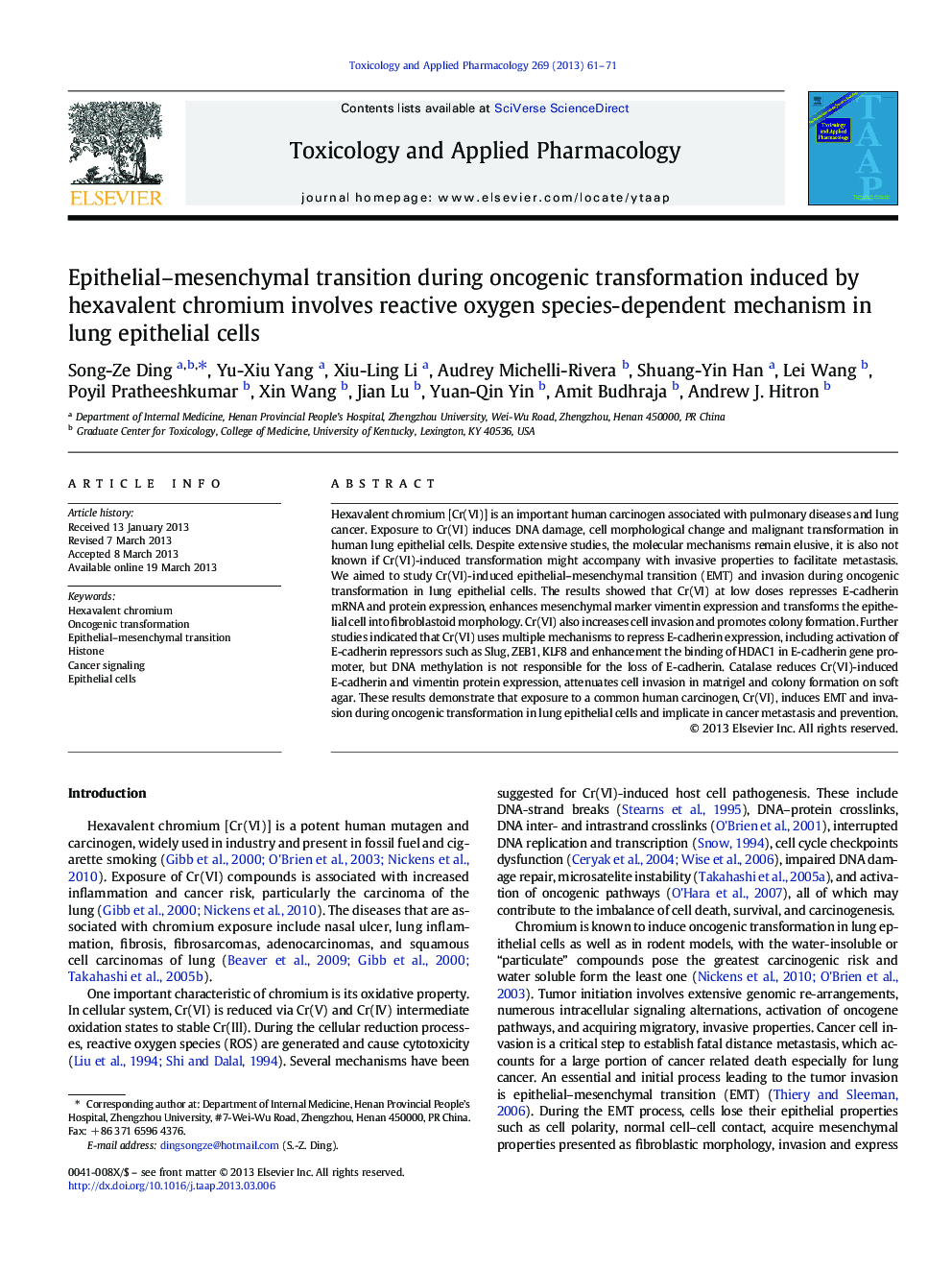| Article ID | Journal | Published Year | Pages | File Type |
|---|---|---|---|---|
| 2568932 | Toxicology and Applied Pharmacology | 2013 | 11 Pages |
•We study if Cr(VI) might induce EMT and invasion in epithelial cells.•Cr(VI) induces EMT by altering E-cadherin and vimentin expression.•It also increases cell invasion and promotes oncogenic transformation.•Catalase reduces Cr(VI)-induced EMT, invasion and transformation.
Hexavalent chromium [Cr(VI)] is an important human carcinogen associated with pulmonary diseases and lung cancer. Exposure to Cr(VI) induces DNA damage, cell morphological change and malignant transformation in human lung epithelial cells. Despite extensive studies, the molecular mechanisms remain elusive, it is also not known if Cr(VI)-induced transformation might accompany with invasive properties to facilitate metastasis. We aimed to study Cr(VI)-induced epithelial–mesenchymal transition (EMT) and invasion during oncogenic transformation in lung epithelial cells. The results showed that Cr(VI) at low doses represses E-cadherin mRNA and protein expression, enhances mesenchymal marker vimentin expression and transforms the epithelial cell into fibroblastoid morphology. Cr(VI) also increases cell invasion and promotes colony formation. Further studies indicated that Cr(VI) uses multiple mechanisms to repress E-cadherin expression, including activation of E-cadherin repressors such as Slug, ZEB1, KLF8 and enhancement the binding of HDAC1 in E-cadherin gene promoter, but DNA methylation is not responsible for the loss of E-cadherin. Catalase reduces Cr(VI)-induced E-cadherin and vimentin protein expression, attenuates cell invasion in matrigel and colony formation on soft agar. These results demonstrate that exposure to a common human carcinogen, Cr(VI), induces EMT and invasion during oncogenic transformation in lung epithelial cells and implicate in cancer metastasis and prevention.
Graphical abstractEpithelial–mesenchymal transition during oncogenic transformation induced by hexavalent chromium involves reactive oxygen species-dependent mechanisms in lung epithelial cells.Figure optionsDownload full-size imageDownload high-quality image (122 K)Download as PowerPoint slide
